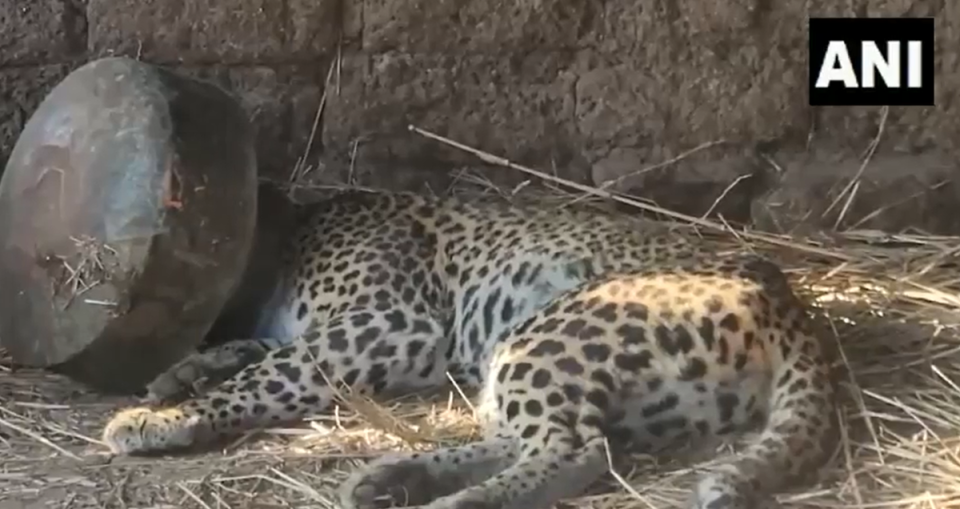Leopard freed after having head stuck in metal pot for five hours

A leopard in India was rescued five hours after its head was trapped in a metal vessel.
The incident took place in Dhule district of the southwestern state of Maharashtra on Sunday, when the big cat ventured into the cowshed of a farm, in search of food and water.
The wild animal was trying to drink water from the metal pot, when its head got stuck inside it, reported the Hindustan Times. It came to light around 2am as the cat attempted to wriggle its head out. Villagers promptly notified the forest department which dispatched a team to the scene.
Assisted by a team of police officials to regulate the crowd, a veterinary official tranquilised the animal to transport it to the forest department’s office, where the leopard was rescued and eventually left into the wild after being kept under observation for a few hours.
“The rescue operation was carried out successfully. After confirming the health condition of the leopard, he was released in the wild by the forest department,” Savita Sonawane, a range forest officer at Dhule Forest Department, told ANI.
The leopard population in India has only grown marginally from 12,852 in 2018 to 13,874 in 2022, according to a recently released report by the country’s environment ministry.

The numbers are likely impacted by poaching and human-wildlife conflict, said the Status of Leopards in India report, according to which Maharashtra has the second highest number of leopard in the country.
#WATCH | Maharashtra: A male leopard spent five hours with its head stuck in a metal vessel in a village in Dhule district was later rescued by the Forest Department: RFO Savita Sonawane
(Video Source: Forest Department) pic.twitter.com/PojOWOCoRd— ANI (@ANI) March 3, 2024
The feline population in the state grew from 1,690 in 2018 to 1,985 in 2022, while central Indian state of Madhya Pradesh has the maximum number of leopards in the country at 3,907 in 2022, up from 3,421 in 2018.
“The data shows that the leopard population hasn’t grown the same way the tiger population has grown. It is a marginal increase,” Y V Jhala, former dean of Wildlife Institute of India told The Indian Express.
However, “it is a matter of satisfaction to manage the status quo”, he told the outlet, as the leopards remain enticing targets for poachers.

